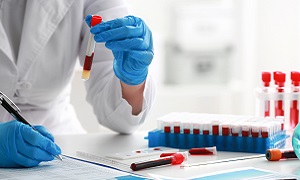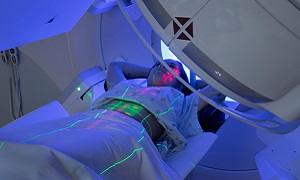Ewing Sarcoma
Ewing Sarcoma is a type of cancerous tumor that grows in the bones or the soft tissue around your bones, such as your nerves or cartilage. It is rare, and mostly affects people between the ages of 10 to 20. It also has a high rate of being cured.
It mostly affects people of white ethnicity. In the US, around 200 children and young adults every year are affected by Ewing Sarcoma. Adults can get Ewing sarcoma as well, but it is generally uncommon.
Symptoms
Signs and symptoms of Ewing’s sarcoma generally include the following:
- Pain, swelling or tenderness near the affected area
- Unexplained tiredness
- Fever with unknown cause
- Bone pain
- Unexpected weight loss
If you or your child, experiences any such persistent symptoms, then you might consider making an appointment with your doctor.
Causes
The exact causes of Ewing sarcoma are still unknown. It is however known to doctors that Ewing sarcoma begins when a cell develops changes in its DNA. The DNA of a cell contains the instructions telling it what to do. These changes instruct the cell to multiply quickly and go on living, whereas healthy cells would die normally. This leads to a mass of abnormal cells which can invade and destroy any healthy body tissue.
In Ewing sarcoma, the DNA changes generally affect a gene known as EWSR1. If your doctor suspects that you might be having Ewing sarcoma, your cancer cells might be tested to look for any changes in this gene.
Few factors that can increase the risk of Ewing sarcoma include:
- Your age- Though Ewing sarcoma occurs at any age, it is much more likely to occur in children, teenagers, and young adults.
- Ancestry- This condition is also known to be more common in people of European Ancestry. In people of African or East Asian ancestry, it is rarer.
Diagnosis
Your doctor might recommend a number of tests to see if you have Ewing’s sarcoma. If you do, they will also try to find out if the tumor has spread and to what extent.
Physical Exam
Bone scan
X-rays
Blood test
Magnetic resonance imaging (MRI)
Computed tomography scan (CAT/CT scan)
Positron emission tomography scan (PET scan)
Biopsy
Bone marrow aspiration and biopsy
Treatment
For Ewing sarcoma, there are various types of treatment that your doctor can consider.
Chemo
Chemo is the most common form of cancer treatment, which involves using powerful drugs to kill cancer cells. Generally, chemo treatment combines two or more drugs which can be administered as an infusion into a vein, in pill form, or in some cases, through both methods.
The drugs can help in shrinking the tumor and make it easier to remove cancer with surgery or radiation treatment if needed.
Surgery
Surgery is performed with the objective to remove all of the cancer cells. But before you plan, you will need to consider how it will affect your ability to go about your daily life.
Surgery for this condition may involve removing a small portion of the bone or in some cases, removal of the entire limb. Whether surgeons are able to remove all of cancer without removing the entire limb depends on several factors, such as the location and size of the tumor and whether it shrinks after chemo treatment.
Radiation Treatment
This method uses high-energy beams like protons and X-rays, to kill the cancer cells. During radiation treatment, the beams of energy are going to be delivered from a machine that revolves around you as you will lie on a table. To reduce the risk of damage to healthy tissues, the beams are carefully directed to the area.
Sometimes radiation treatment might also be recommended after surgery in order to kill any cancer cells that remain.
If your Ewing sarcoma is advanced, then radiation treatment helps to slow its growth, as well as help in relieving any pain.
Complications
Ewing sarcoma and its treatment can lead to multiple side effects which include:
- Cancer that spreads (metastasizes)- Ewing sarcoma can spread from where its starting area, which makes treatment and recovery harder. Ewing sarcoma generally spreads to the lungs and to the other bones.
- Long-term side effects of treatment- The aggressive treatments needed for controlling Ewing sarcoma can lead to substantial side effects, both in the short term as well as long term. Your healthcare team might help you manage the side effects that happen during treatment. They are also likely going to provide you with a list of side effects that you need to watch for, in the upcoming years after treatment.






